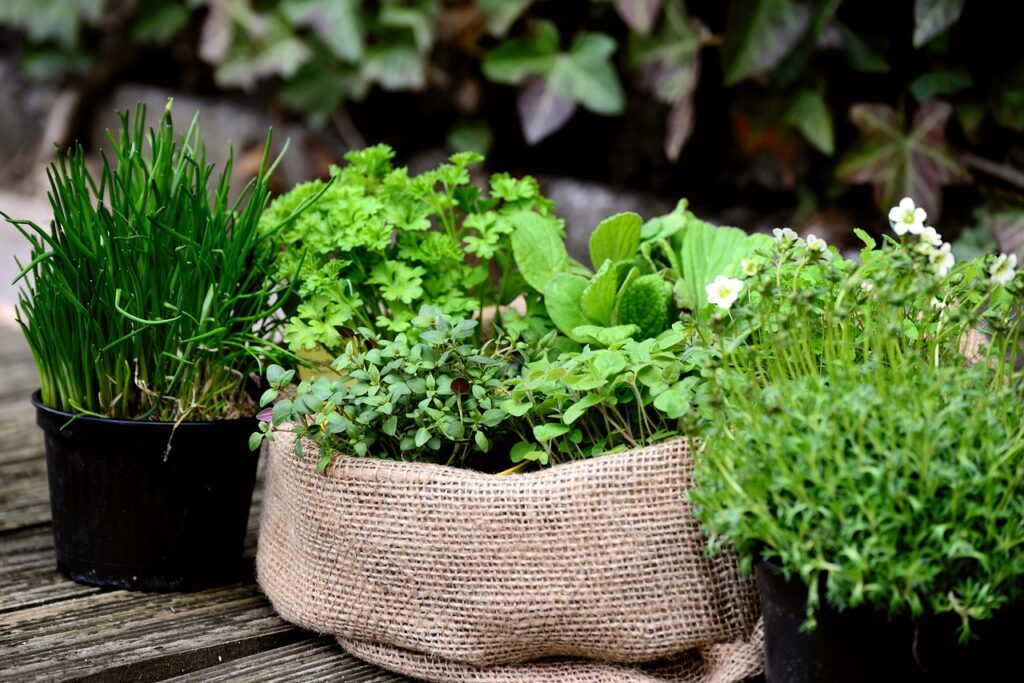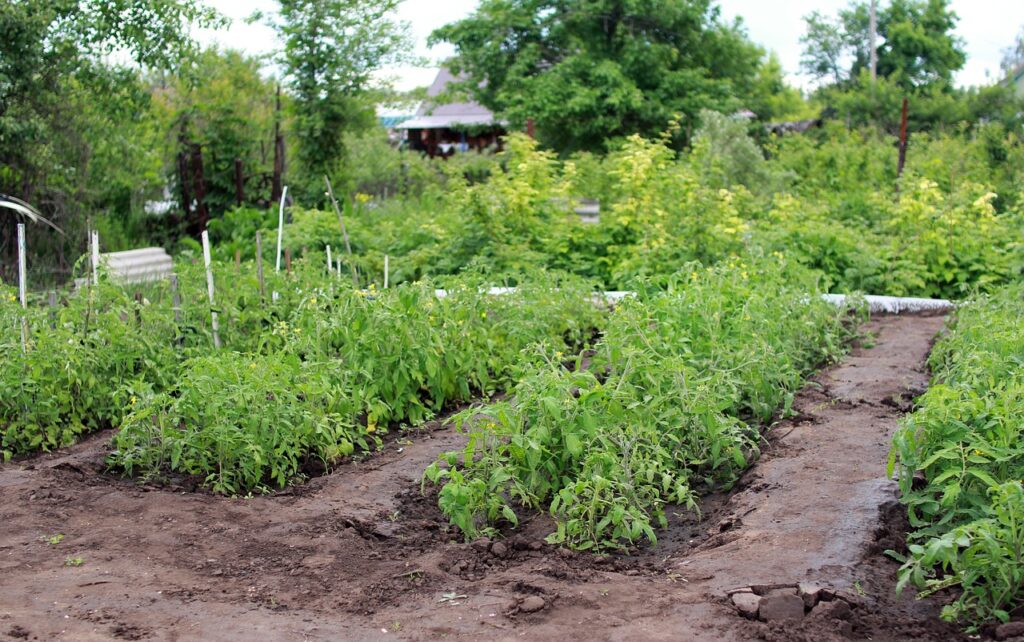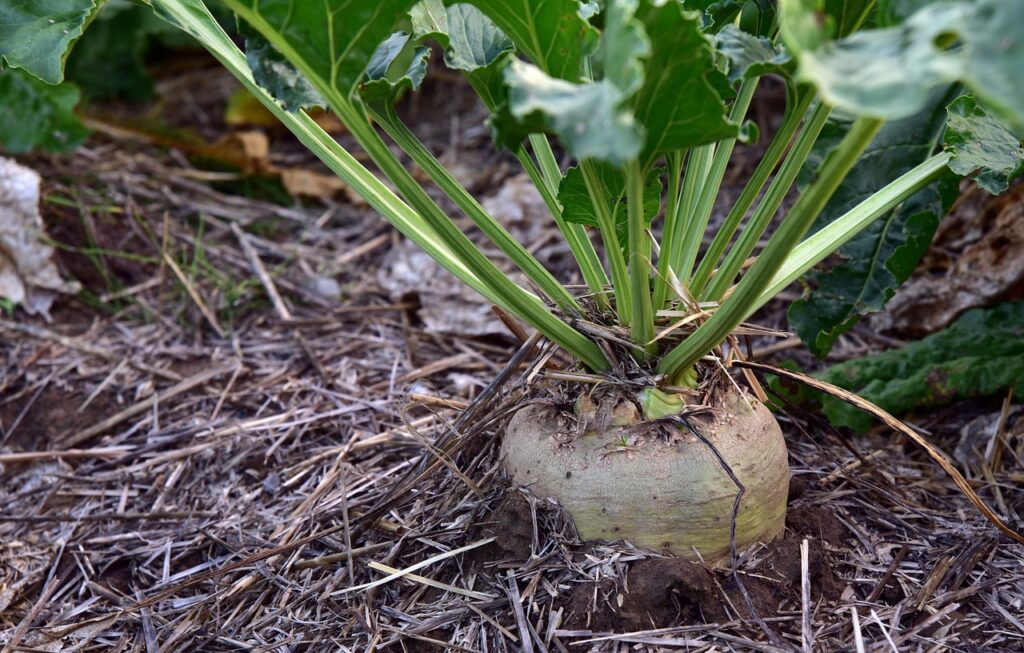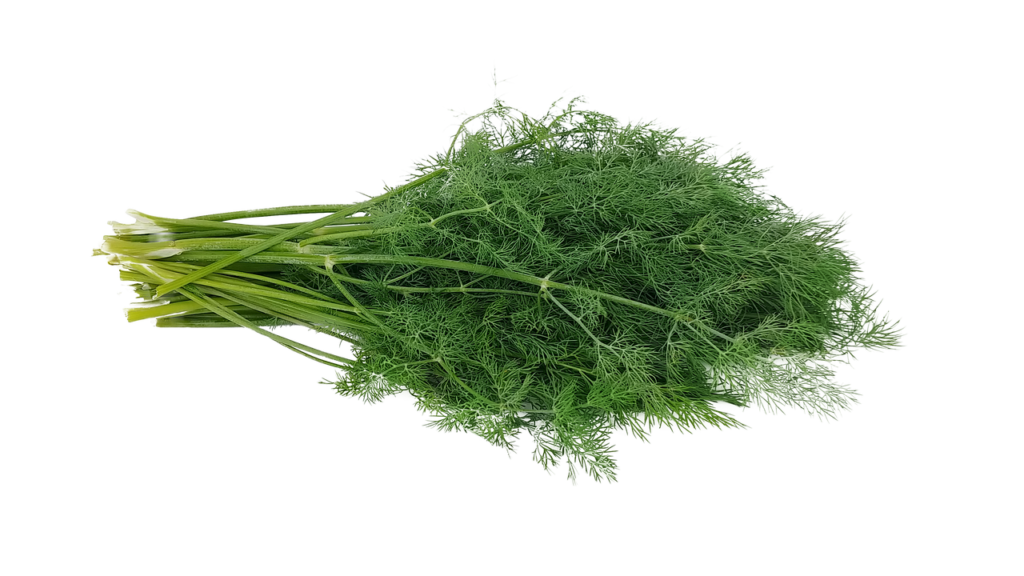Herbs are a great addition to any kitchen garden. Not only do they add flavor to our dishes, but they are also packed with healthy nutrients. Growing kitchen herbs in your own kitchen garden can be a great way to enhance your cooking. If you’re new to gardening, it can be overwhelming to decide which herbs to grow. In this expert guide, we’ll take a look at the best herbs to grow in a kitchen garden, how to care for them, and the benefits of each.
Thyme – The Fragrant Herb
Thyme is a popular herb in the Mediterranean cuisine. It is one of the common garden herbs. It has a wonderful fragrance and is perfect for seasoning soups, stews, and sauces. Thyme is also known for its medicinal properties. It has anti-inflammatory properties and has been used to treat respiratory infections. Thyme is a hardy herb that requires minimal care. It is drought-tolerant and does well in well-draining soil. It prefers sunny spots in the garden and can be grown indoors in pots.
Rosemary – The Hearty Herb
Rosemary is a perennial herb that is native to the Mediterranean. It has a strong fragrance and is used to season meat dishes, soups, and stews. Rosemary has antimicrobial properties and is known to improve memory and mood. It is a hardy herb, versatile, requires minimal care, and is one of the ‘stalwart’ herbs to plant. Rosemary prefers well-draining soil and sunny spots in the garden. It can be grown indoors in pots.
Basil – The Flavorful Herb
Basil is a popular garden herb and used extensively in Italian cuisine. It has a sweet fragrance and is used to season tomato-based dishes, pasta, and salads. Basil has anti-inflammatory properties and is known to reduce stress. It is a great addition to a kitchen garden as it requires minimal care. Basil prefers well-draining soil and sunny spots in the garden. It can also be grown indoors in pots.
Mint – The Fresh Herb
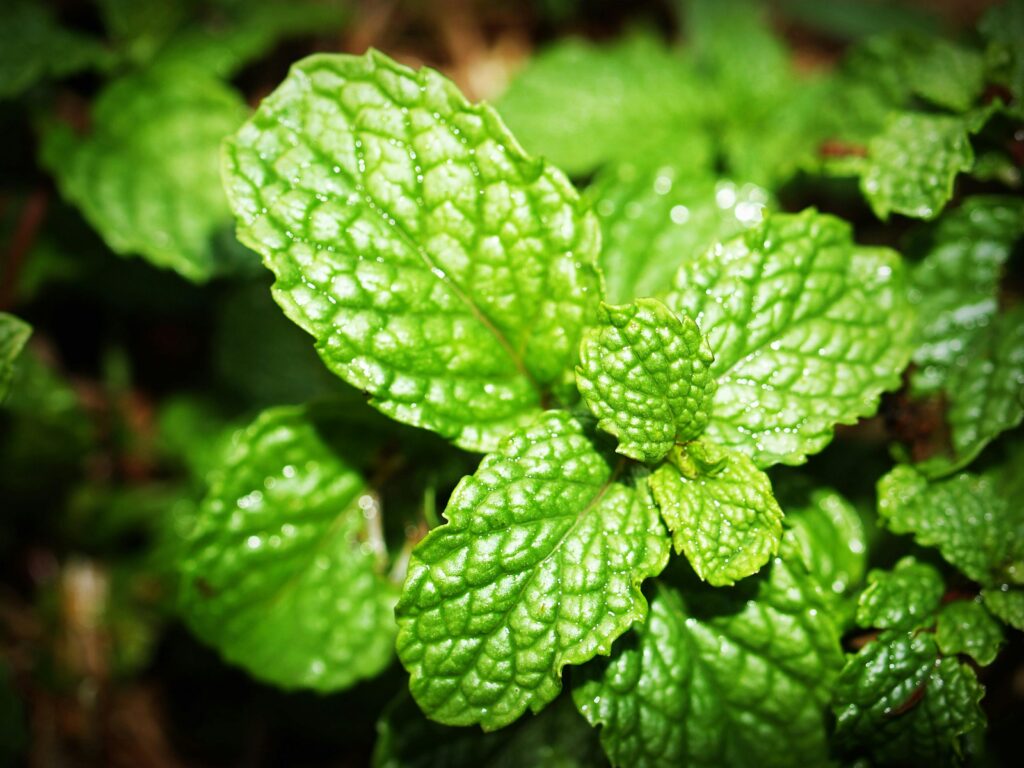
Mint is a refreshing herb that is commonly used in drinks and desserts. It has a cooling effect and is great for easing digestive issues. Mint is also rich in antioxidants and has anti-inflammatory properties, making it one of the more popular herbs for the garden. It is a hardy herb that requires minimal care. Mint prefers rich, moist soil and sunny spots in the garden. It can also be grown indoors in pots.
Chives – The Onion-flavored Herb
Chives are a member of the onion family and are commonly used to flavor soups, salads, and sandwiches. They have antioxidant properties and are great for strengthening the immune system. Chives are a hardy herb that requires minimal care. They prefer well-draining soil and sunny spots in the garden. Chives can be grown in pots indoors or outdoors.
Sage – The Healing Herb
Sage is a popular herb in Mediterranean and Middle Eastern cuisine. It has a strong flavor and is perfect for seasoning meat dishes, stuffing, and sauces. Sage has anti-inflammatory properties and is known to improve brain function. It is a hardy herb that requires minimal care. Sage prefers well-draining soil and sunny spots in the garden. Sage can be grown in pots indoors.
Oregano – The Versatile Herb
Oregano is a popular herb in Italian and Greek cuisine. It has a strong flavor and is perfect for seasoning pizza, pasta, and salads. Oregano has antimicrobial properties and can help improve gut health. It is a hardy herb that requires minimal care. Oregano prefers well-draining soil and sunny spots in the garden. It can be grown in pots indoors or outdoors.
Dill – The Seed Herb
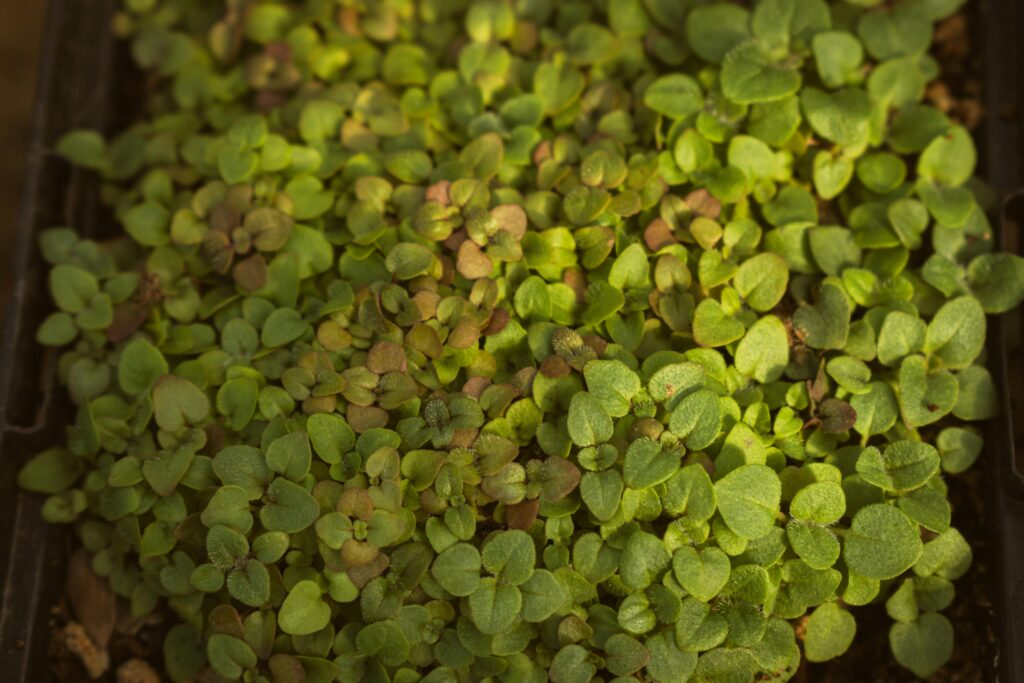
Dill is a popular herb in Scandinavian and Eastern European cuisine. It has a unique flavor and is perfect for seasoning fish dishes, pickles, and dips. Dill has antimicrobial properties and is great for reducing anxiety. It is a hardy herb that requires minimal care. Dill prefers moist soil and sunny spots in the garden. It can be grown in pots indoors or outdoors.
Lesser-known, but Delicious Kitchen Herbs
Let’s explore some lesser known herbs that offer unique flavors and various health benefits. Using these herbs in the kitchen, will elevate your cooking, adding an extra layer of creativity and excitement to your dishes. See the below list of unusual herbs for planting.
1. Lovage (Levisticum officinale):
Lovage is a perennial herbaceous plant with a striking resemblance to parsley. Its bold, celery-like taste makes it an excellent addition to soups, stews, salads, and stocks. This herb offers a refreshing aroma and adds a rich, earthy flavor to dishes. Moreover, lovage possesses diuretic properties, aiding digestion while being a source of antioxidants and vitamins.
2. Lemon Verbena (Aloysia citrodora):
Lemon verbena, with its strong, citrusy scent, boasts an impeccable taste that evolves from tropical to floral notes. Its leaves can be infused in creams, dressings, or cocktails, imparting a refreshing lemony flavor. This herb pairs exceptionally well with fish, seafood, and poultry dishes. Additionally, lemon verbena possesses calming properties that can help alleviate stress. One of the great herb garden plants!
3. Shiso (Perilla frutescens):
Shiso, also known as Japanese basil, is a popular garden herb in East Asia and their cuisine. Its vibrant green or purple leaves possess a unique blend of flavors reminiscent of mint, anise, and cinnamon, with a hint of citrus. Shiso is commonly used as a garnish, shredded into salads, or wrapped around sushi. This herb is believed to have anti-inflammatory properties and is a rich source of vitamins and minerals.
4. Epazote (Dysphania ambrosioides):
Epazote is an herb widely used in Mexican cuisine, renowned for its distinctive pungent aroma. Its leaves add a strong, earthy flavor to traditional dishes like beans, quesadillas, and stews. Epazote’s powerful aromatic compounds can aid in digestion and help combat gastric distress. Moreover, this herb is known for its potential antimicrobial properties.
5. Sorrel (Rumex acetosa):
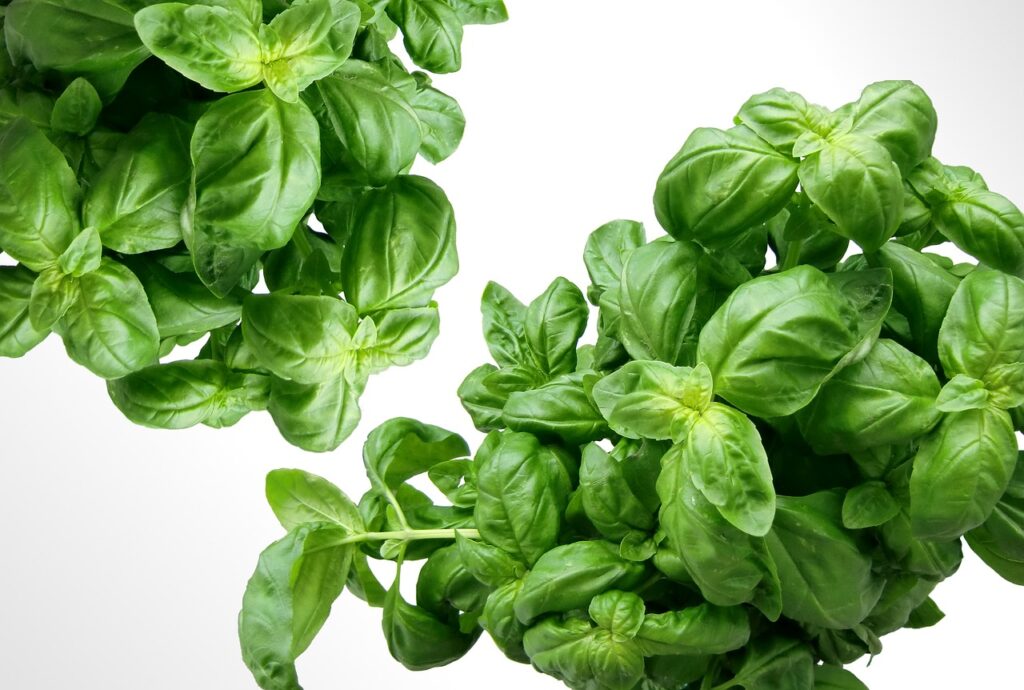
Sorrel is an herb with a lemon-like tartness that brightens up various dishes. Its vibrant green leaves are commonly used in soups, sauces, pestos, and omelets, lending a tangy and slightly sour flavor. Sorrel is not only a delicious addition to the kitchen, but it also contains high levels of Vitamin C and antioxidants that help boost the immune system.
6. Wintergreen (Gaultheria procumbens):
Wintergreen, often referred to as the “forest’s natural mint,” is a perennial herb with a strong minty aroma. Its leaves can be used for making teas, syrups, and flavorings for desserts and beverages. Wintergreen possesses antiseptic and anti-inflammatory properties, making it a valuable herb for oral health and soothing sore muscles.
7. Vietnamese Coriander (Persicaria odorata):
Vietnamese coriander, also called “Rau Ram,” boasts a unique flavor profile with hints of cilantro, mint, and citrus. Commonly used in Vietnamese cuisine, its leaves lend a spicy and robust flavor to soups, stir-fries, and salads. This herb is believed to possess antioxidant properties and has been traditionally used to aid digestion.
8. Salad Burnet (Sanguisorba minor):
Salad Burnet, a perennial herb, imparts a subtle cucumber-like flavor to dishes. Its leaves are commonly used in salads, sandwiches, and summer drinks. In addition to its refreshing taste, Salad Burnet has diuretic properties and is said to improve digestion and alleviate mild urinary tract issues.
Best Potting and Watering Practices
To ensure that your herbs thrive in your kitchen garden, it is essential to use the right potting soil and watering practices. When growing herbs indoors, it’s best to use a well-draining potting mix that allows air and water to flow freely. Outdoor herbs also require well-draining soil. Avoid over-watering as this can lead to root rot. Water your herbs when the soil is dry to the touch, and do not allow the soil to be waterlogged. Make sure your drainage holes in pots are functioning properly so excess water can escape. Fertilize your herbs regularly with organic fertilizers. Growing equipment is available see here
Growing herbs in your kitchen garden, and using them in your cooking, is beyond rewarding. They are packed with flavor and healthy nutrients, and each herb has unique properties. Thyme, rosemary, basil, mint, chives, sage, oregano, and dill are some of the best herbs to grow in a kitchen garden. If you’re new to gardening, these herbs are perfect for getting started. By following the right potting and watering practices, your herbs will thrive and add a burst of flavor to your meals.
Learn more about growing tomatoes
